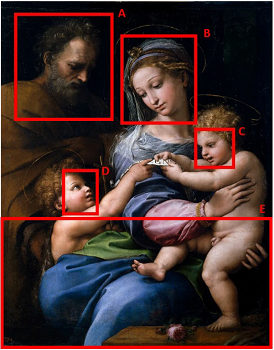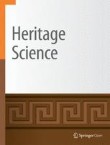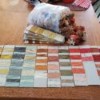2024
Visualising and Defending Values in Architectural Heritage Changes
Edited by Raffaella De Marco, Izabella Parowicz, Francesca Picchio, Yara Saifi
Collection open for submission
Cultural Heritage of Neolithic Walled Towns in the Middle Yangtze River Valley: From Archaeological Discoveries to Scientific Interpretation
Edited by Tao Li, Siwei Shan, Xiyun Yu
Collection open for submission
2022
Advanced Analytical Techniques for Heritage Textiles
Edited by Christina Margariti, Hana Lukesova, Francisco B. Gomes
Collection published: 2 November 2022
The Future of Heritage Science and Technologies: Papers from Florence Heri-Tech 2022
Edited by Rocco Furferi , Maria Perla Colombini, Kate Seymour, Anna Pelagotti, Francesco Gherardini
Collection published: 19 October 2022
IPERION HS: Integrating Platforms for the European Research Infrastructure on Heritage Science
Edited by Marei Hacke, Jana Striova, Matija Strlič
Collection published: 7 September 2022
Preventive Conservation, Predictive Analysis and Environmental Monitoring
Edited by Ángel F. Perles, Laura Fuster-López, Emanuela Bosco
Collection published: 3 August 2022
Thoroughly Modern: Investigating Materials and Techniques
Edited by Ana Martins, Abed Haddad
Collection published: 25 May 2022
2021
Cleaning and Conservation
Edited by Bronwyn Ormsby, Angelica Bartoletti, Klaas van den Berg, Chis Stavroudis
Collection published: 3 November 2021
Space Technologies for Sustainable Heritage: 10th Anniversary of HIST
Collection published: 1 June 2021
2020
The Network Initiative for Conservation Science (NICS): Building Bridges across New York City Museums
Edited by Federica Pozzi and Elena Basso
Collection published: 8 August 2020
Pigments, dyes, and colors in Latin american archaeometric investigations
Edited by Marcela Sepulveda, Edgar Casanova
Collection published: 20 May 2020
2019
NANORESTART: Nanomaterials for the restoration of works of art
Edited by Piero Baglioni
Collection published: 31 October 2019
The Girl in the Spotlight: A technical re-examination of Vermeer’s Girl with a Pearl Earring
Edited by Abbie Vandivere
Collection published: 29 August 2019
13th IRUG Conference
Edited by Paula Dredge
Collection published: 16 August 2019
2018
5th International Congress on Chemistry for Cultural Heritage
Edited by Dr Elena Badea
Collection published: 23 November 2018
Manuscripts in the Making
Edited by Dr Paola Ricciardi
Collection published: 9 March 2018
2017
Historic Monuments of the World
Collection published: 10 October 2017
2nd International Conference on Science and Engineering in Arts, Heritage, and Archaeology
Edited by Prof. Heather Viles, Dr Yun Lieu and Dr Karina Rodriguez Echavarria
Collection published: 30 January 2017
4th International Congress on Chemistry for Cultural Heritage
Edited by Dr Geert van der Snickt
Collection published: 24 January 2017
2016
Heritage Science in Australia
Collection published: 22 December 2016
The SEAHA-CDT collection
Edited by: Dr Josep Grau-Bove
Collection published: 7 November 2016
Shedding light on the past: Optical Technologies Applied to Cultural Heritage
Edited by: Prof. Demetrios Anglos
Collection published: 14 April 2016
2015
Imaging and Analysis of Cultural Heritage Materials
Edited by: Dr Edward Vicenzi
Collection published: 1 December 2015
11th International Conference on Indoor Air Quality in Heritage and Historic Environments
Edited by: Dr Jiri Smolik
Collection published: 22 September 2015
Archaeometry international workshop: XRF and Raman applied in archaeology
Edited by: Dr Marcela Sepulveda
Collection published: 11 June 2015
3rd International Congress on Chemistry for Cultural Heritage
Edited by: Prof. Manfred Schreiner, Dr Rita Wiesinger
Collection published: 2 April 2015
2014
VIII Italian National Congress of Archaeometry
Edited by: Prof Colombini Maria Perla, Dr Alessandra Bonazza
Collection published: 15 December 2014
Technart 2013: Analytical Spectroscopy in Art and Archaeology, the Rijksmuseum Amsterdam, 23-26 September 2013
Collection published: 30 May 2014
2013
Scientific Methods in Archaeology
Edited by: Dr Kaare Lund Rasmussen
Collection published: 6 June 2013
International Conference on Modern Chemical Technology in the Protection of Cultural Heritage, China 2012
Edited by: Prof Ling He
Collection published: 15 April 2013
 Featured article - Deep transfer learning for visual analysis and attribution of paintings by Raphael
Featured article - Deep transfer learning for visual analysis and attribution of paintings by Raphael 


